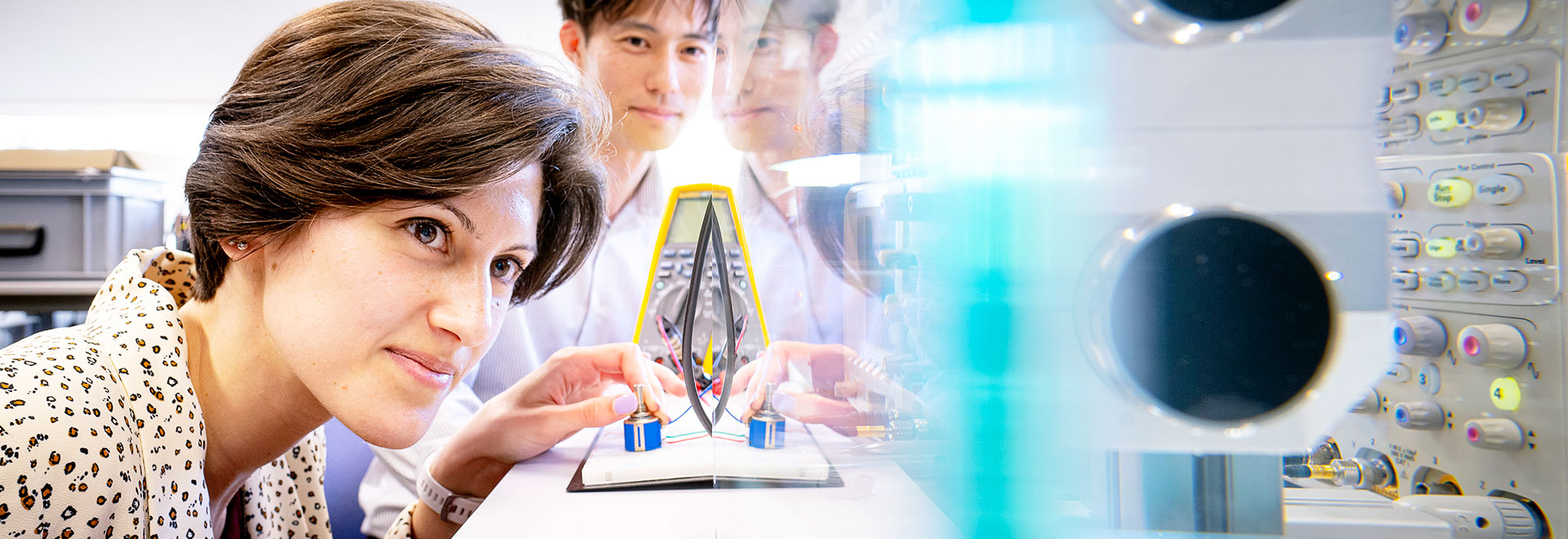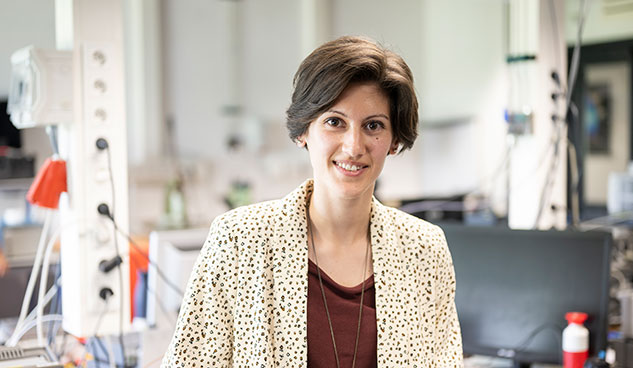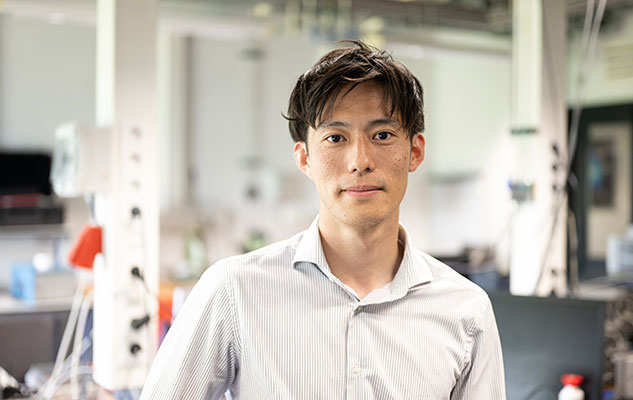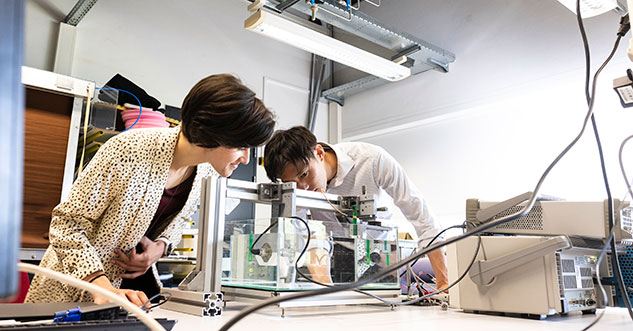
What was first considered a failure, might cause a revolution in fueling in-body implantable devices
To our engineering teams, the words ‘it cannot be done’ work like a magic charm. They take pride in solving the seemingly impossible. In the interview series ‘Our eureka moment’, engineers talk about these breakthroughs; what challenges did they face and how did they overcome them, together with their colleagues?
If you think about breakthrough innovation, the default process is something like this: there is a challenge, a brilliant mind comes up with a ditto idea, it is developed and successfully brought to market.
Sometimes, however, groundbreaking inventions are discovered by accident. Or they come out of what initially was considered to be a failure. The result of an experiment doesn’t meet expectations, ends up in a drawer, but years later it turns out to serve a function that no one had foreseen at the time.
Post-it notes, for example, were developed using a glue that failed to meet the stringent requirements of the aerospace industry. Its stickiness seemed just perfect for putting small yellow notes to an office wall.
Something similar recently happened in the Philips MEMS Foundry; a project that was considered a failure six years ago may turn out to be a revolution in fueling in-body implantable devices.
CMUT
The discovery took place in the field of capacitive micromachined ultrasonic transducers (CMUT); small ultrasound transducers that can be produced in a cost effective way at large scale. It is generally agreed that CMUT technology can open up a world of application areas, bringing ultrasound diagnostics and monitoring to point of care, like general practitioners, physiotherapists, and midwives.
There is a downside, however. CMUTs require a (large) DC bias voltage to operate. This especially restricts the in-body application areas of CMUT, since the DC voltage source limits both the size and cost of the components for the application.
Two researchers recently succeeded in developing a pre-charged CMUT that can operate without an external bias. Their secret: making smart use of a charge-trapping layer that is embedded in the dielectrics between the top and bottom electrodes of these transducers.
“The very fact that this layer is charged, was initially considered to be a failure”, says Marta Saccher. As a PhD candidate at Delft University of Technology she works on a research project at Philips. “In fact, that is why the device that we worked on had been hidden inside a cupboard for six years.”

The ‘failed’ device was originally developed in 2017 as a test device with a different dielectric layer stack to increase the acoustic output of the CMUT by sandwiching a high-k dielectric constant material between the standard dielectric material. Shinnosuke Kawasaki, a Wearable Ultrasound Researcher at Holst Centre who works closely together with Marta and other Philips researchers on CMUT projects explains:
“CMUT transducers consist of two membranes. First you bring them into collapsed state by applying a high DC bias voltage. Then you superimpose an alternating voltage to vibrate the top membrane to generate ultrasound waves. Normally these devices should come out of collapse when the DC bias voltage is removed. However, these devices behaved differently as the top membrane remained stuck to the bottom one. Typically, this is an outcome that is undesired.”
Surprisingly stable
The guiding principle has always been that a capacitor should only charge temporarily, and not permanently. Shinnosuke: “Dielectric charging is seen as a reliability issue in MEMS devices, since it causes instability of the device characteristics up to the point at which the device fails. So, when researchers in 2017 found that the CMUT device was not behaving as expected, it was put aside. But what we found in our research, was that this internally built-in charge can be used as an internal bias voltage. The so-called ‘failed’ device was ideal for permanently storing charge. The only thing we needed to figure out, was how to avoid charge leakages as much as possible.”

It turned out to be a lot more stable than expected. Marta: “Our eureka moment was when we used pre-charged CMUT to receive ultrasound power to light up an LED diode. As we increased the input ultrasound power, we noticed that the receive voltage amplitude reached up to 20 Volts, without discharging the pre-charged CMUT device.”
‘In ten years, it might power heart implants’
The potential of this method can hardly be overestimated, Shinnosuke explains: “Thanks to pre-charged collapse-mode CMUTs, you can enjoy the high performance of CMUT technology without having to incorporate any additional electronics to generate a high DC bias voltage. This is a very important step towards using CMUT for in-body devices. In a couple of years, we might even be able to use this technology to power heart implants. The lifetime of this technology is very long, so you wouldn’t need to have open heart surgery every ten years to replace a battery.”
“This is a very important step towards using CMUT for in-body devices. In a couple of years, we might even be able to use this technology to power heart implants. The lifetime of this technology is very long, so you wouldn’t need to have open heart surgery every ten years to replace a battery.”
The research paper on this topic was recently published by the scientific IEEE Open Journal on Ultrasonics, Ferroelectrics and Frequency control and is currently even one of the top performing articles. Another milestone soon followed; the team has been able to generate an image of an ultrasound phantom with sufficient image quality using pre-charged CMUT. “No one really believed that we could make it happen until the image came out,” says Shinnosuke.

There is still some development work that needs to be done, though. “It does really help that Philips is part of the European project Moore4Medical that focuses on accelerating the innovation in emerging medical domains, among which, bioelectronic medicines,” says Marta. “Within Moore4Medical, we built a platform for these wirelessly powered implantable devices, by working closely together with partners that provide the necessary components to build the whole system, including sensors, power management unit, packaging and so on. That means that we can move forward relatively quickly and apply the technology in clinical practice in the foreseeable future.”
Learn more about
our work
Looking for a job?
Visit the career page

